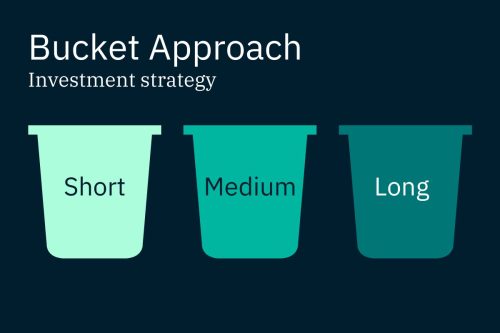Choosing the right investment strategy is about selecting the right mix of investment assets to achieve your personal or business financial goals, this is consistent with your appetite for risk.
Many people incorrectly think of risk as a binary outcome – the risk of one or zero. Risk is more diverse and applies to both situations and investments. For example, the risk of complete loss, the risk of running out of money, the risk of not having access when you need it.
Different types of asset classes have characteristics that respond differently to different types of risk. A good financial planner can help you to understand your risk tolerance and determine the right investment strategy over time.
What is risk tolerance and how is it different from risk capacity?
There’s a big difference between your risk capacity, your risk tolerance and your required risk. This is critical to understand when designing investment outcomes.
Your risk capacity is a financial outcome. It is how much risk you can take on in your current financial situation.
Your risk tolerance is an emotional response. It is your comfort level with how much risk you are willing to take to achieve your financial goals. It generally doesn’t change over time.
Your required risk is the risk you need to take to meet your objectives.
When these three risks are aligned, you have the best combination of strategy and investments to meet your goals.
Why volatility is not risk
Volatility is often used to reflect risk, however this is incorrect. Volatility is best defined as the movement in prices from their starting point, up or down. Volatility is not to be avoided completely, as ironically it is what allows prices to rise over time which provides the return that investors are seeking.
What is important is how you manage access to funds as they go through any volatility.
The importance of liquidity and accessibility in your investment strategy
The primary risk people articulate is having enough to live on now and during retirement. That means your investment strategy must have an appropriate level of accessibility and liquidity.
The liquidity of an investment refers to how easy it is to access and convert to cash to manage changing personal or financial circumstances. When you understand that, your investment strategy is no more difficult than what can you afford to do now while achieving your current and future financial and other goals.
How to access investment funds over time?
As a rule of thumb, one of a couple aged 65 will likely reach aged 90. That means you have 25 years of retirement to fund. The risk is whether your wealth will last long enough to deliver your goals. The question to ask is how you can extend your wealth while managing access to it.
The bucket approach to investment strategies
Investment strategies often use the ‘bucket approach’ as guidance. This helps to ensure you have a range of assets in line with your risk tolerance to maximise returns to achieve your goals, together with your liquidity needs.
Bucket | Timeframe | Typical investments |
Bucket 1 | Short term 1-3 years | High yield cash and term deposits. |
Bucket 2 | Medium term 3-7 years | Bonds and some shares. |
Bucket 3 | Long term 7+ years | Shares and property. |
When these buckets are combined into the one account, investors often focus on the bottom line. At certain times, when the bottom line has decreased, it may look like you are poorer but what you have done is manage risk in those challenging circumstances.
Expert help to understand your risk tolerance and determine the right investment strategy
A good financial planner will ask you the difficult questions to help you to get clear about your personal and financial goals. They will listen to understand your current financial position and your risk tolerance.
There is usually a deficit between where you are now and where you need to be to meet your goals. They will help you to determine your preferences and trade-offs. What you are willing to give up or what risks are you prepared to and have the capacity to take to achieve your goals
The wealth management team at Pitcher Partners Newcastle and Hunter have the expertise and experience to ask the right questions and guide you to choose the right investments for your risk tolerance to meet realistic financial goals.
They have the systems to ensure you have access to the right information to build and adjust your investment strategy to meet your changing personal and financial circumstances and goals.
Contact our wealth management team today by calling 02 4923 4000 or visit pitchernewcastle.com.au/wealth
Joshua Drake is a Private Client Adviser at Pitcher Partners Private Wealth. He is a Certified Financial Planner and a multi-award-winning adviser with more than 25 years of experience in successfully partnering with business owners and individuals to organise and optimise their wealth management strategies. Josh delivers honest advice without fear, helping clients to make a good decisions about their futures.










